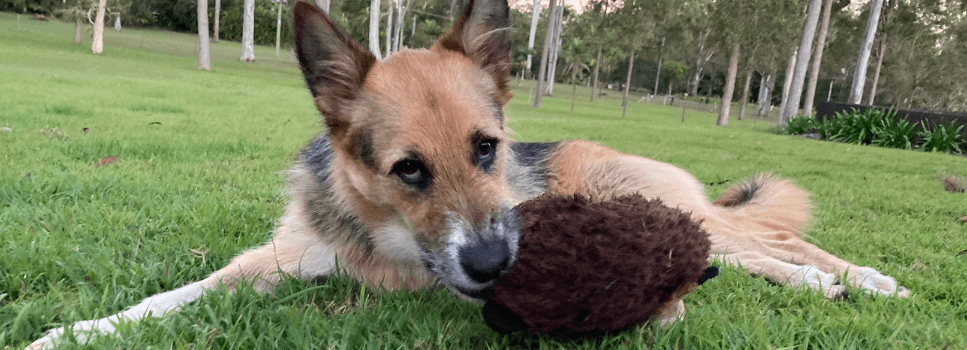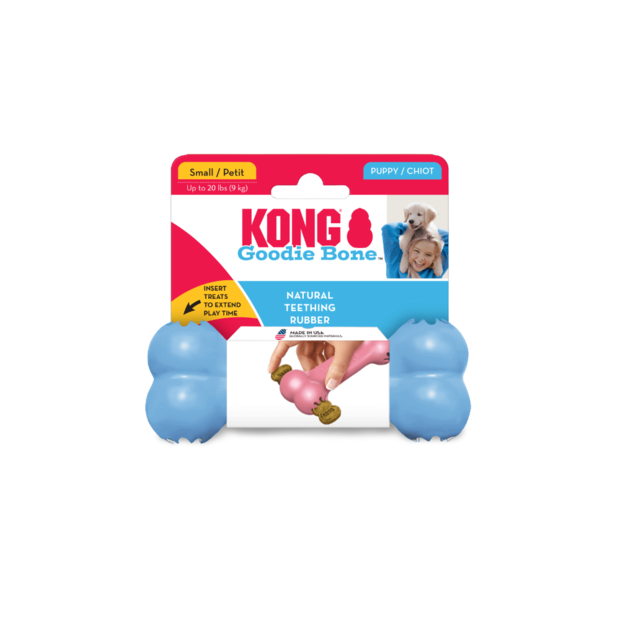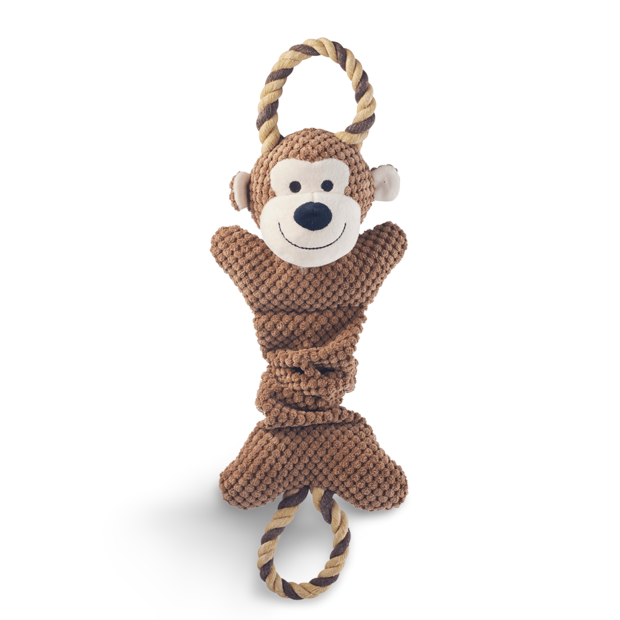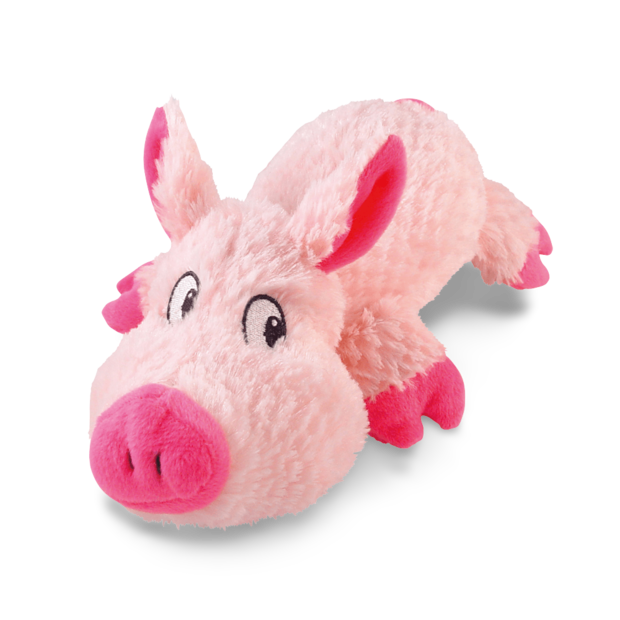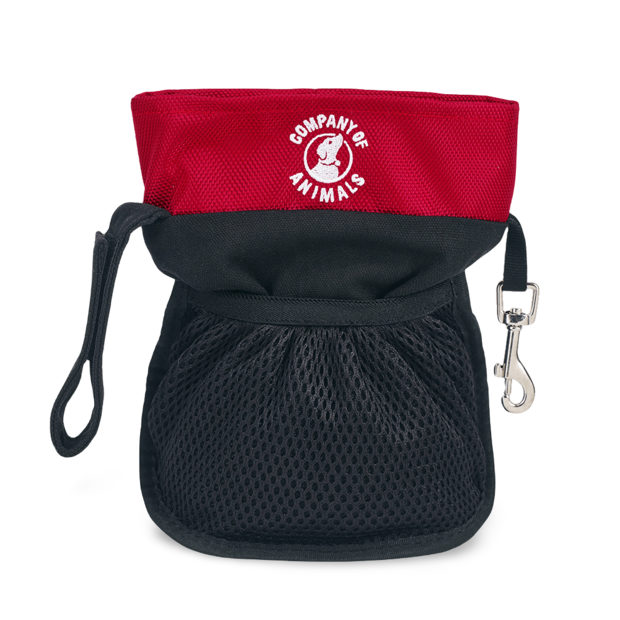Resource Guarding in Dogs
This article is written by Pet Circle veterinarian,
Resource Guarding can be a common problem in dogs that stems from their own natural instincts. It may even appear cute in puppies who steal and guard their toys. However, it can also pose a serious problem and risk for injury if your dog shows resource aggression to yourself, your family or your other pets.
Contents:
How to Prevent Resource Guarding
What is Resource Guarding?
Suppose you had a delicious bowl of hot chips and I reached across the table to steal one. You'd feel pretty upset and annoyed, right? Well, so does your dog when someone tries to take his food or toys away.
Resource guarding is rooted in survival instincts. Wild dogs have a limited availability of resources that they require for survival. The dog with the most resources is the strongest and healthiest. In our domestic pets, this competitiveness for resources is not required, but some pets will still exhibit possessive behaviour towards their perceived resources.
The severity of resource guarding can vary between dogs and is impacted by many factors. One such impacting factor is an underlying health concern, especially pain. So a vet check is always recommended to rule out an underlying health cause.
Signs of Resource Guarding
Signs of resource guarding may include:
- Eating more quickly
- Stiffening the body
- Standing over the item
- Growling
- Lip licking or curling
- Running away with the item
- Sideways Glancing or Flashing the whites of the eyes
- Teeth Baring
- Snapping or Biting
- Lunging
Resource guarding is most commonly associated with food, but can apply to anything your dog considers of value from chews and food or water bowls, to favourite toys, household items they've unexpectedly stolen and even space or people.
How To Prevent Resource Guarding

Image Credit: Luke the Border Collie


Prevention is better than a cure! The key to reducing resource guarding in adult dogs is to prevent it in our puppies. There can be a lot of misleading training information spread around regarding the right way to train your puppy not to guard their resources. Anything that involves taking a resource from a puppy can threaten the security of that resource and make them more likely to guard it in the future.
So what should you do?
Use Higher Value Treats
Dogs guard items they consider to be of high value. This comes back to their survival instincts. They perceive that the item (food, toys, water, space, etc) is essential for survival. In order to distract them from an "essential item" you need to use a reward that they consider of even higher value or more essential. Bangers and mash is good, but cake is better.
High value treats tend to be those that are really smelly or are a rarely received item, such as cooked meat and cheese. Using these foods sparingly increases their value and is also important to prevent weight gain.
Top Recommended Puppy Training Treats
Toss Treats Around Resources
You want your pup to associate people approaching their resources as a good thing. So every time someone walks past or approaches a potential resource, toss a high value treat towards the bowl. You can slowly get closer to them as they become more comfortable with you, eventually sitting near the bowl and handing them treats or placing treats in the bowl. If you have other pets, give them a reward every time another pet passes the resource.
You can also practice tossing treats around the room where the resource is. Your pup will want this treat, and they have to leave their resource to get the treat. Leave the resource where it is so that your dog can come back to it and see that the resource hasn't been taken when they left it.
Do Not Feed Pets Together
If there is a threat to your pet near their food, then this is likely to increase the anxiety around meal times and the food bowl. Another dog or pet in the immediate vicinity could easily attempt to snatch your dog's food. Instead, make sure they are fed separately. This could be opposite sides of a room, different rooms or even in their individual dog crates where they know they are safe and the other pet cannot access. Try to avoid giving them treats together as well. Individual training sessions are required for them to learn how to behave effectively without the suspicion and anxiety that someone else is going to get the treat first.
Don't Leave Out Potential Resources
Keep all those contraband items out of reach. Keep the shoes up high or in a closed storage area. Put laundry in a basket out of reach. Pack up toys after you have finished playing with them; this also helps to prevent your pup losing interest in their toys. Pick up food bowls after the meal is finished and put them on the sink or in the cupboard.
Don't Chase A Pup With Contraband
Despite your best efforts, your puppy is going to pick up something they shouldn't have or could be a potential obstruction if swallowed. In this situation, the worst thing you can do is chase them. Dogs love a game of chase. If your pup thinks it's going to make you chase them, they are going to be more likely to steal household items in the future. Fighting with them over the item will also make them more likely to guard similar items in the future.
Exchange Contraband
If your pup does have something they definitely shouldn't be chewing, grab an exchange item. Puppies like movement, so sit somewhere the pup can see you and move the exchange item, whether it be a chew, toy or treat. When your puppy chases the item you have, tease them and play with them. Only let go when their focus is completely on the new item. Casually take the contraband item. If they turn back to the item, then drop it and re-engage them with your exchange item. They shouldn't be worried about you removing the contraband.
Do Not try to sneak or snatch a contraband item away - this will get your puppy's attention and make them think the game is with the contraband.
Top Recommended Puppy Chew Toys and Treats
Teach Your Puppy Drop It
Exchanging contraband and picking up resources becomes a much more peaceful experience if your pup will drop something on command. There are many ways to teach 'Drop It', but I will discuss two here:
Using Toys
Playing with two toys of equal or similar value, you can teach your pup both 'Take It' to initiate play, and 'Drop It' to release the toy. The toy in your hand should be the most exciting, play with it, squeak it, shake it around. When your dog grabs it say 'Take It'. Let them play and engage with the new toy, then introduce the second. Make the second toy exciting. When your pup releases the first toy, 'Drop It' and 'Take It' when they grab the second toy. Keep rotating the toys. Play is the reward used here.
Using Treats
You will still need a toy or chew for this, just make sure your food is of higher value. Get your pup engaged with the toy or chew. When they are playing with it, place a treat in front of their nose. They should release the toy for the treat. Praise and reward then re-engage them with the toy; it back to them so they learn they aren't going to lose it. Once your puppy reliably releases the toy for the treat, you can add in the 'Drop It' cue, just before you offer the treat and they release the toy.
Recommended Toys For Teaching 'Drop It'
How To Stop Resource Guarding

What if your puppy has grown into a dog that resource guards or you've adopted a rescue who is worried they are going to lose everything? Don't give up hope yet. Many of the preventative tips above will be helpful, they may just need to be slightly varied as to reduce upsetting your dog or worsening the problem. So here are my top tips for reducing resource guarding.
DO NOT punish a dog that is resource guarding. Punishment can escalate guarding behaviour because you ignored your dog's warnings and added a negative association with someone approaching their resource.
Prevent Situations Leading To Guarding
If your dog guards food, then let them eat their meals in peace. Place them in a secluded room or safe place where your family members and other pets cannot disturb them. Otherwise you can use a gate to block access to the area where your dog gets fed while they are eating.
Any high value treats or long-lasting chews that they get should be given to them in this safe secluded area as well. Do not open the gate or let your family and other pets near your guarding dog until they have finished their treat and relaxed. Never allow another dog to try and take the treat from your dog that guards. When they've finished their meal, put the bowl away so they cannot reach it.
If your dog guards water bowls or sources, then ensure that you provide multiple bowls both inside and outside to provide your other pets an alternate option. Do not leave out pools that your dog may guard.
For dogs that guard toys and objects, place any unused objects or toys out of reach in a toy box, cupboard or shoe box. Keep contraband out of reach on benches or in cupboards. Only allow your dog to play with toys when they are playing and interacting with you directly. When the game of tug or fetch finishes, take the toys with you so your dog is unable to take them away and guard them.
If your dog guards space or locations, such as a seat on the couch, then block access to that location and maintain boundaries for what areas it is appropriate for your dog to be and where they shouldn't be. Enforce a 'no dogs on the furniture rule', even if it is only temporary until they learn that the chair/furniture is not their resource.
Train Away From The Behaviour
If your dog has injured someone or is at risk of injuring someone then contact a qualified trainer or behaviourist to get your training started.
Your training goal will be to reduce their level of fear associated with someone approaching the resource (called desensitisation) and teach them instead that people approaching is a good thing (called counter-conditioning).
Before you start training, you will need to find your dog's boundary. This is the point where your dog starts to demonstrate signs they are uncomfortable with you approaching them. Take a couple steps back from this boundary line, this is where you should start off.
Approach this boundary and toss treats towards your dog, then walk away again. Make sure these treats are a much higher value than what they already have. Repeat this process a couple of times at each meal time or when your dog has a resource they might guard. Over time, you can slowly walk closer to your dog, but it is important not to overstep your dog's boundary. If they do start to show subtle signs of being uncomfortable, go back to the last place they were comfortable and start again.
Outside of these dedicated training sessions, train behaviours that encourage your dog to willingly give up resources, such as 'Drop It', 'Leave It' and recall. 'Drop It' refers to items that your dog is already in possession of. 'Leave It' is used in reference to items your dog is interested in, but hasn't yet picked up. Practising recall is great for calling your dog away from items they might guard.
Progress will be slow and take time, but keep persisting to make your dog more comfortable around their resources and keep your family safe.
Shop All Training Supplies Now
Resource Guarding People
If your dog guards people, such as yourself or a family member, then a slightly different approach is needed. In these cases, the dog is often seen as "protective" of the family member they are guarding. This is often because the dog often sees the person they are guarding as a resource, and they see anyone approaching as a threat to that resource. So there are two key steps to reduce guarding of people.
Create Boundaries
You have your own personal space and just like we don't want other people in our personal space constantly, your dog shouldn't be either. Create rules to show your dog when they should and shouldn't be in your personal space. If they start showing signs of guarding and you have no personal space, then create the space. Walk away. Put the dog on the floor. Institute a no pets on the furniture rule. You can allow them back into your personal space when they are calm and repeat the process if they start guarding again. In this case, you are considered the "high value reward". When they guard, the reward goes away, and when they are calm, the reward returns.
If your dog has a reliable "place" command, then you can send the dog away from you to their "place" when they show guarding behaviour.
Build Positive Associations
Similar to guarding objects, you also need to build positive associations with guests or other family members approaching you. So have your family members or guests who are willing to help throw some treats on the floor away from you when they enter the room, then they can leave again. Repeat this process until your dog is comfortable with other people being in the room or close to you. This also means that other people in the house should bond with the dog through play, feeding them and taking them for walks.
Dogs that suffer from separation anxiety may be more likely to stick close all the time. For more information, check out our Managing Separation Anxiety in Dogs article.
Further Reading
Want to read more? Check out our other articles:
Pooping, Biting, Barking: The Ultimate Puppy Training Guide
Managing Separation Anxiety in Dogs
Want to know more? Check out our Discover Page for more tips from our expert vets on keeping your pets happy and healthy.























